By Lauriane Lognay

The extensive beryl group, one of the oldest known mineral families, is renowned for its most famous varieties, emerald and aquamarine—which were first mentioned as early as 79 A.D. in Pliny’s Natural History. Yet, there are other stones in the jewellery market that you may not know belong to the beryl group, like morganite, goshenite, heliodor, red beryl, and even maxixe!
The beryl crystal system is hexagonal with strongly prismatic gems (some can be tubular, but they’re scarcer). Though the origin of the word “beryl” is unclear, it may have derived from the Greek beryllos, a term used to refer to blue-green gems in general. While the Greeks used beryllos to refer to the mineral, in Latin, beryllos was used to describe the properties of the crystal—as opposed to the specific variety. The French later adapted the Latin word to brillé, which means “to shine.”
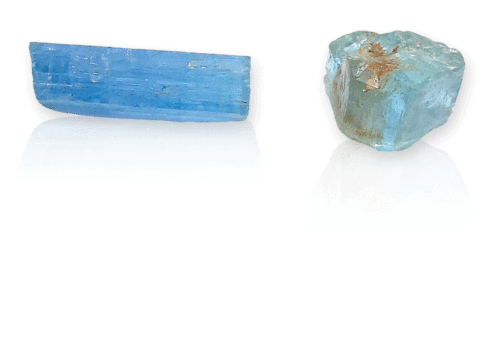
Exploring different types of beryl
Aquamarine
Aquamarine was named because its colour evokes the ocean. The name originates from the Latin aqua marina, meaning “seawater.” The darkest aquamarines, known as Santa Maria, are sold at a higher price than paler varieties. The name Santa Maria was originally exclusively reserved for darker aquamarines sourced from a mine of the same name in Brazil. Today, Santa Maria aquamarines are considered the most expensive and sought after due to their rich colour.
Aquamarine is often heat treated to eliminate yellow and green undertones in the gemstones.
Maxixe or blue beryl
Maxixe is blue, a rare type of beryl with a very unstable colour. Under daylight, it will fade to a yellow-brown colour in a few hours to weeks. While some beautiful crystal specimens can be found, maxixe is considered a collector’s stone rather than one that can be used in jewellery.
The colour can be enhanced with irradiation but will still fade with time.

Morganite
Morganite is the peach/pink variety of the beryl group. It has gained much popularity in the last 10 years for its soft colour palette. To improve its colour, Morganite is often heated or irradiated.
‘Rosterite’ and ‘Corobievite’ are older names used to describe specific colours of morganite. Almost colourless and pale morganite specimens are called ‘cesian beryl.’ However, this variety is more commonly called by the better-known name, goshenite.
Emerald
Emerald, coloured by chrome, is the greenest and most widely recognized variety of the beryl group. Emerald owes its name to the Greek smarados, a Semitic word meaning “to shine.”
In the Middle Ages, many green gemstones were collectively called emeralds—though they might have been peridots, tsavorite garnets, tourmalines, or others. It wasn’t until recently that we developed the ability to distinguish between the different green gems.
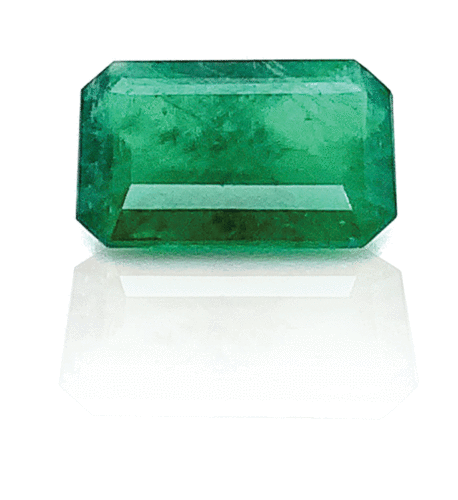
Some inclusions in certain emeralds can even help determine their origin. Emeralds were and still are gems worn by royalty, with a heavy history behind their use in jewellery. The most significant emerald mines are in Muzo, Colombia. But the stones can also be found in Ethiopia, Brazil, Zimbabwe, Pakistan, Afghanistan, and many more places!
Emeralds are almost always oiled. The oil can be colourless or green to help with the general appearance. They can also be treated with opticon (type of glass) or resin. Emerald’s tone and shade make it the most precious and expensive of all beryls. Though the stone largely owes its vibrant colour to chrome, it can also come from vanadium.
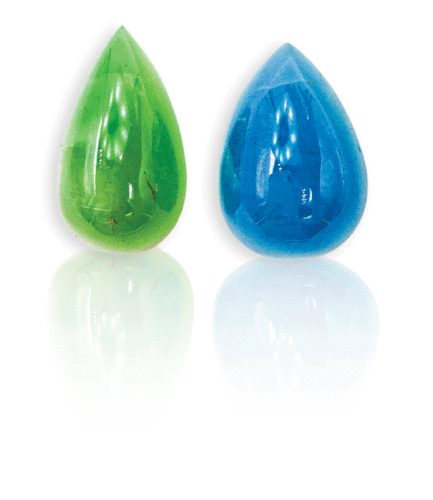
Green beryl
A green beryl is not considered an emerald mostly because of its lack of chrome—chrome is the main part of an emerald’s colour. Green beryls are a less desirable and less expensive green option since the colour is not as deep and as beautiful as emerald.
Red beryl
A rare type of beryl formerly known as bixbite, this gem is mostly red in colour but can be found in purplish-red and orange-red. Considered a collector gem, it was first discovered in Utah, U.S. Clean red beryl material of more than one-carat is extremely rare and sought after by avid collectors.
Heliodor
Heliodor—also called golden beryl, yellow beryl, or even falsely named the ‘yellow emerald’—is a yellow to light green beryl variety. The name is derived from the Greek helios doro, meaning “sun gift.”
This stone can be found in Brazil, Madagascar, Namibia, etc. Generally, bigger crystals can be acquired with relatively few inclusions, making it an excellent option for clients who want yellow gems but do not want citrine. Heliodors can be heat-treated to help with the colour.
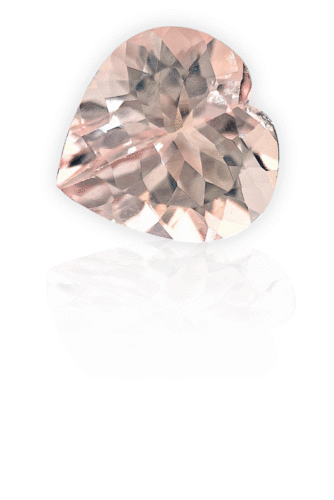
Goshenite
This rather inexpensive colourless variety of beryl is named after the town of Goshen, Mass. Natural radiation can permanently change goshenite’s colour to yellow (heliodor).
Pezzottaite
Pezzottaite, discovered in Madagascar, first came to attention in 1995 as a rumour—as it had initially thought to be a type of tourmaline. It wasn’t until 2003 that the gem was officially studied and given its proper name.
While pezzottaite is often associated with the beryl group of minerals, it’s not considered a true variety of beryl because it has a different crystal system. While they share some similarities, their structural differences set pezzottaite apart from traditional beryl varieties.
While beryls are all hexagonal crystals, pezzottaite is rhombohedral, making it one of the only gems in the group without the same crystal system (another exception would be the feldspar group).
The crystals are small, only a few centimetres in size, making them rare collector’s stones. Their colour is a deep purplish pink or red.
Some other rare beryls to consider
- Bazzite. A pale to dark blue stone. Some varieties are yellow.
- Stoppaniite. An extremely rare stone, only found in one location in Italy. It has a light blue colour.
- Indialite. A colourless stone.

Beryls, a Canadian gemstone?
Beryls are found in various countries worldwide, including Ukraine, China, the U.S., Finland, Australia, Mozambique, Kenya, Tanzania, Namibia, South Africa, Brazil, and Vietnam. An interesting location that many may not know about is Canada.
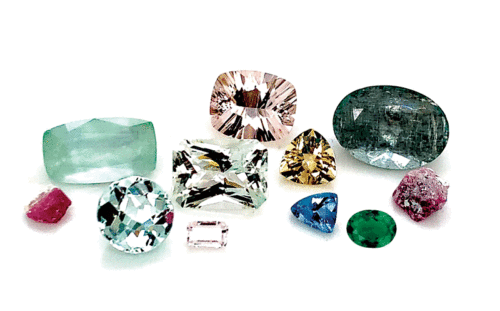
While it’s not widely known, Canada is home to various types of beryls, including emeralds, aquamarines, green beryls, and goshenite. The deposits are mostly situated in the Yukon, Ontario, British Columbia, and Northwest Territories.
Beryls are a rich part of our history, from the deepest green to the softest pink, making that group a great option in jewellery for every taste. The beryl group has long enchanted the jewellery world; from rare specimens to affordable colours and sizes, it is a gem that shines.
References
1 The sisk gemology reference by Jerry Sisk volume 1 / prominent gems
2 Beryl and its colour varieties, Lapis international, LLC
3 Guide des pierres précieuses by Walter Schummann
4 www.gia.edu
Lauriane Lognay is a fellow of the Gemmological Association of Great Britain (FGA) and has won several awards. She is a gemstone dealer who works with jewellers to help them decide on the best stones for their designs. Lognay owns Rippana, Inc., a Montréal-based company that offers coloured gemstone, lapidary, and jewellery services. She can be reached at rippanainfo@gmail.com.





